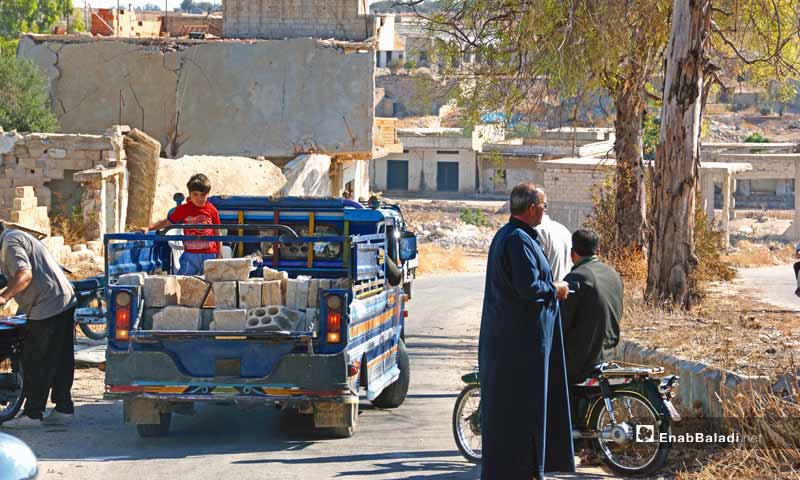



After the optimism that overcome Idlib and its surrounding as an effect of the Russian-Turkish deal, providing for the cession of military operations, and the details about its application mechanisms that started to clarify, concern and disputing opinions about the deal began to appear.
The deal between the Turkish President Recep Tayyip Erdoğan and his Russian counterpart Vladimir Putin provides for the establishment of a demilitarized zone at the length of the confrontation lines between the regime’s forces and the opposition, with a depth between 15 to 20 kilometers, with the condition that it be evacuated of heavy weaponry.
The deal has also provided for the withdrawal of heavy arsenal of all these areas on October 15.
Factions Changing Their Opinions
The first of the attitudes to waver concerning the deal was that of “Jaysh al-Izza”(Army of Glory), the largest opposition faction in the northern countryside of Hama and the first to welcome the deal, as it today refuses the foundation of a buffer zone at the expense of the opposition-held areas.
In a statement, released on Saturday (September 29), the army said that it will not approve the details of the demilitarized zone mentioned in the latest deal, since the foundation of the area is conditioned to be at the expense of the opposition-controlled area, thus being at the advantage of Assad’s forces.
It also refused the launch of Russian patrols at the territories included within the agreed upon buffer zone, and the reopening of the international highway as to “release Iran and the regime, and to activate their trade,” unless the detainees, held at the Syrian regime’s detention centers, are released.
In an interview with Enab Baladi, Hussian Hashem, a member of the revolution coordination offices in Hama, said: “That who agreed to the buffer zone, his politics are of the art of possible and the preservation of the souls of three million humans, as well as their protection of the expected holocaust. The owners of this opinion aimed at utilizing this opportunity to unify the lines and the word militarily and politically, and to arrange the scattered cards.”
As for those who opposed the deal, he believes that this has been imposed on them externally and are traitors of the revolution and its principles, while they are the decision owners, being the target of this deal. He yet has faith that there are still cards on the table, which can change this equation, as he put it.
The vast majority of the people of the villages, located within the demilitarized zone, approved the map, through which they expect the return of safety and possessions in their towns, and their agricultural real estate, as well as their return from the areas to which they have been displaced.
This area includes many villages, which according to their location are classified as the confrontation line which separate the villages controlled by the Syrian regime from those held by the opposition.
The area extends from the village of al-Karim in the south, passing through the villages of Qabr Fidda, al-Ramla and al-Hakoura, ending with the Sirmaniyah and the rural parts of Jisr al-Shugur. It also includes the villages of al-Ghab Plain, in the east, and Shashabo mountain range.
The area’s population is estimated with about 200 thousand people, the majority of whom are displaced to refugee camps or countries of asylum.
The Director of the Qabr Fidda Local Council told Enab Baladi that in relation to the villages of al-Ghab Plain, they will in general be under the control of the Turkish forces, as for the areas that are controlled by the Syrian regime, they will be run by the Russian forces. They are nine in number, starting from the village of al-Karim, in the south, and reaching the village of al-Hakoura in the north, which have been taken over by the regime and were almost completely destroyed.
“The majority of the people refuse to return due to the presence of the regime’s forces. The presence of the Russian forces and the withdrawal of the regime’s forces might be a trigger for many of the people, who have no role in the revolutionary action, as to return to cultivate their lands, they were forced to leave for years.”
While talks started to address the implementation of the deal’s terms, a number of rural Hama’s people started to return to their towns and villages. Director al-Masri stressed that rural Hama will witness the return of its people from the areas to which they were displaced, in sync with the spread of the Turkish forces in the demilitarized zones. However, he said that the return is so far “shy.”
Hatim Ibrahim, a mand displaced from the town of al-Hakoura, al-Ghab plain, expressed his contempt over the placement of his village and neighboring villages within the Russian control areas.
The displaced man said that Russia and the regime are two sides to the same coin, which cannot be trusted as to run the area. Even with the withdrawal of the regime’s forces and the stay of the Russians, the young men’s return will be impossible fearing the revenge of the neighboring villages, the majority of which are pro-regime and have witnessed battles with the opposition factions before.
if you think the article contain wrong information or you have additional details Send Correction